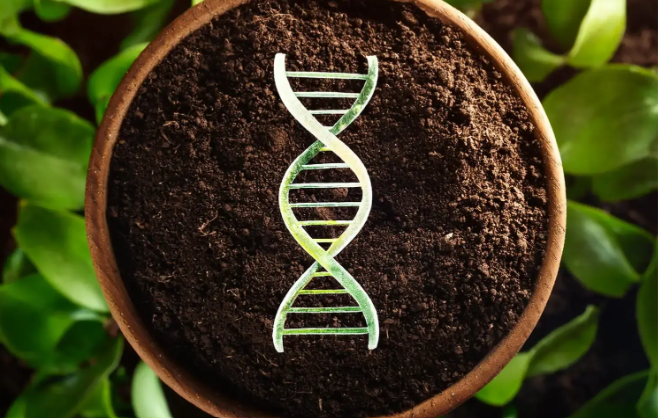What is the Soil Microbiome & Why Is It Important?
Beneath our feet lies an intricate and dynamic world that is fundamental to life on Earth: the soil microbiome. This term refers to the vast and...

The soil microbiome is the invisible engine of terrestrial life. Composing a rich network of soil bacteria, fungi, archaea, protozoa, viruses, and nematodes, it underpins everything from plant health to climate regulation.
In both natural soils and managed agricultural soils, soil microbes form the foundation of soil health, driving nutrient cycling, soil structure, and plant growth through diverse biological soil functions.
As global agriculture faces mounting pressures, from soil degradation and climate change to the demands of a growing human population, understanding and improving the soil microbiome is essential. A healthy, active soil microbiome can increase agricultural productivity, strengthen ecosystem resilience, and even help mitigate climate change by rebuilding soil carbon and improving carbon sequestration.
Explore Cmbio’s Soil Microbiome Research Services
Improving the soil microbiome is both a scientific challenge and a practical opportunity. Based on current research the following methods can significantly enhance soil health and support beneficial microbes:
Reduce tillage to preserve soil food webs, maintain soil stability, and protect soil microbial habitats. Low-disturbance practices like no-till or strip-till foster a healthy microbial community.
Incorporate plant-derived organic matter, dead plants, cover crops, and compost to feed soil organisms and increase soil organic matter - the dark spongy material formed by decomposed biomass.
Diverse cover crop species and rotation strategies disrupt pest cycles and promote microbial diversity by introducing varied plant root exudates and residues.
Apply inoculants such as mycorrhizal fungi, Rhizobium, and beneficial bacteria to accelerate soil regeneration and improve biological soil functions.
Cut back on synthetic fertilizers and pesticides that damage microbial communities. Use organic materials and integrated pest management (IPM) systems.
Manage traffic patterns and use lighter equipment to prevent compaction, preserving soil porosity, aeration, and microbial activity.
Recent studies have highlighted several cutting-edge methods to improve soil microbial life.
Biochar is a stable, carbon-rich material that supports soil microbes by improving porosity, water retention, and nutrient availability. It is especially beneficial in degraded or carbon-depleted soils.
Brewing compost teas introduces diverse, living microbial communities into the soil. These liquid extracts restore soil fertility and boost microbial diversity when applied to crops or soil samples.
Covering soil with mulch or living plants:
The soil microbiome refers to the entire community of microorganisms living in the soil. This includes bacteria, fungi (especially mycorrhizal fungi), archaea, viruses, protozoa, and nematodes, each performing specific roles in soil food webs and ecosystem functions.
At the heart of microbial activity lies the rhizosphere—the thin zone of soil surrounding plant roots, where root exudates fuel dynamic microbial interactions. Within this hotspot, beneficial microbes such as:
These organisms are essential for decomposing organic materials, cycling plant carbon, and maintaining a healthy microbial community.
An optimized soil microbial community supports healthy soils in numerous ways. Key benefits include:
Moreover, healthy soil microbial communities can reduce greenhouse gas emissions by regulating the rates at which soils release carbon dioxide into the atmosphere.
A range of modern agricultural practices are placing increasing pressure on the soil microbiome, reducing microbial diversity and impairing the biological soil functions critical to healthy, productive ecosystems. Understanding these threats is key to reversing soil degradation and restoring soil health.
Synthetic inputs, while effective in the short term, can disrupt the natural balance of soil microbial communities. Over time, chemical fertilizers may replace biological soil functions, making soils reliant on artificial nutrient sources. Pesticides, meanwhile, often have non-target effects, damaging beneficial microbes such as nitrogen-fixing bacteria and mycorrhizal fungi.
These disturbances reduce soil microbial diversity and compromise the soil’s ability to cycle nutrients and support plant health naturally.
Planting the same crop year after year restricts the diversity of plant-derived organic matter entering the soil. This limits the variety of root exudates that feed different microbial groups, ultimately reducing microbial diversity and weakening the active soil microbiome.
Poor crop rotation not only undermines soil structure and stability, but also increases vulnerability to pests and disease, issues that healthy microbial communities would typically help manage through competition and suppression.
The repeated use of heavy machinery in modern farming can cause significant soil compaction. This reduces pore space in the soil, limiting oxygen availability and water infiltration - both of which are vital for soil microbes and plant roots.
Compacted soils also impede root growth and microbial movement, slowing down natural processes produced by soil organisms and negatively impacting overall soil formation and regeneration.
Tillage breaks apart the soil structure, disrupts soil food webs, and exposes organic matter to rapid decomposition. While it may be used to manage weeds or prepare seedbeds, excessive tillage accelerates the breakdown of complex organic materials without replenishing the system.
This not only releases carbon dioxide into the atmosphere, contributing to climate change, but also destabilizes microbial habitats, leading to a loss of beneficial microbes and long-term declines in soil fertility.
Organic matter is the primary food source for soil microbes. Without regular inputs of decomposing organic materials—such as compost, cover crop residues, or dead plant materials, soil microbial communities begin to collapse.
The decline in soil carbon and biological activity leads to poor soil structure, reduced nutrient cycling, and diminished capacity for water retention. Soils that lack carbon-rich organic matter become biologically inactive, further accelerating soil degradation and reducing agricultural productivity.
At Cmbio, we specialise in soil microbiome research that empowers farmers, agronomists, and landowners to make data-driven decisions.
Through cutting-edge sequencing of soil samples, we analyse soil microbial communities, assess microbial diversity, and offer tailored interventions to restore soil health, enhance soil microbiomes, and accelerate soil regeneration.
Soil microbial community structure is shaped by a range of environmental and management factors, including soil pH, moisture levels, organic matter content, and land use practices. The use of synthetic fertilisers, tillage, and monoculture systems can disrupt this delicate balance, while practices like adding compost, planting cover crops, and reducing soil disturbance help support a more diverse and resilient microbial network.
A well-balanced microbial community underpins soil health by maintaining nutrient cycling, disease suppression, and plant growth support.
Beneficial soil fungi, such as mycorrhizal fungi, play essential roles in enhancing nutrient uptake, especially phosphorus, and improving soil structure. These fungi form symbiotic relationships with plant roots, extending their access to water and nutrients while receiving carbon in return.
In doing so, they help stabilize soil aggregates, improve soil porosity, and enhance soil fertility. Incorporating practices that support beneficial soil fungi, such as minimising tillage and avoiding harsh chemical inputs, can significantly enhance soil function and productivity.
When microbes break plant matter down, such as dead plants, plant-derived organic matter, and crop residues - they transform complex organic materials into simpler compounds through microbial decomposition. This process is fundamental to rebuilding soil carbon and maintaining nutrient availability. It’s how soil carbon appears and becomes stored in stable forms, improving soil structure and supporting long-term fertility.
Without active microbial communities, soils lose their ability to process organic matter naturally, forcing farmers to rely on inputs that replace biological soil functions, often at the expense of long-term soil health.

Beneath our feet lies an intricate and dynamic world that is fundamental to life on Earth: the soil microbiome. This term refers to the vast and...

Soil testing is a diagnostic tool that evaluates the nutrient content, composition, and other characteristics of soil. By analyzing soil samples,...

The skin is the largest organ of the human body, serving as a crucial barrier between our internal systems and the external environment. The human...